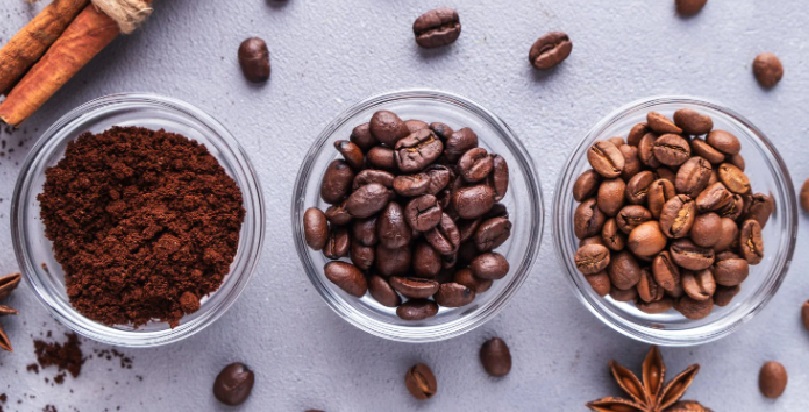
Colombian coffee roast stands out in the global coffee scene due to its rich, diverse flavors and high-quality beans. Predominantly grown in the lush landscapes of Colombia’s coffee belt, these beans are known for their smooth, mild flavor, which comes from the unique climatic conditions of the region. The meticulous process of washing and drying the beans contributes to their clean taste and bright acidity, making Colombian coffee highly sought after by enthusiasts and professionals alike.
Key Takeaways for Understanding Colombian Coffee Roast
- Flavor Profiles: Colombian coffee is celebrated for its wide range of flavors, which include but are not limited to notes of caramel, nuts, and fruits. This diversity is due to the varied microclimates across coffee-growing regions.
- Roasting Practices: The roasting of Colombian coffee is an art that aims to enhance its natural flavors. Light to medium roasts are common, which help preserve the bean’s inherent sweetness and acidity.
- Regional Variations: Colombia’s coffee regions, such as Antioquia, Huila, and Tolima, each contribute distinct characteristics to their coffee. This variation is influenced by differences in altitude, climate, and soil composition.
The Regions of Colombian Coffee
Colombia is rich with diverse coffee-growing regions, each offering unique beans that contribute to the nation’s reputation as a top coffee producer. Here’s a closer look at some of these regions:
- Huila: Known for its consistent quality and award-winning coffees, Huila boasts a perfect combination of high altitude and rich volcanic soil, enhancing the coffee’s acidity and sweetness.
- Antioquia: One of the larger coffee regions, known for producing a significant volume of Colombia’s coffee. The beans here typically have a full body and mild flavor, making them a favorite for those who prefer a less acidic coffee.
- Tolima: Often less known but highly valued among coffee connoisseurs, Tolima’s coffee can be exceptionally sweet with complex aroma notes, thanks to its volcanic soil and ideal rainfall.
Roasting Colombian Coffee: Techniques and Profiles
The roasting process is crucial in defining the final taste of Colombian coffee. Different roasting techniques can highlight various aspects of the bean:
Light Roast: Enhances the original flavors of the bean, usually leading to a more acidic and fruity taste. It’s perfect for those who appreciate the nuanced flavors inherent in high-quality Colombian beans.
Medium Roast: Strikes a balance between acidity and body, bringing out the chocolatey and nutty flavors that Colombian coffee is known for. This roast level is often preferred for its versatility and is widely used in commercial and specialty coffees.
Dark Roast: Offers a bolder, richer taste with less acidity but more bitterness. This roast level is excellent for those who enjoy a hearty, robust cup of coffee that stands up well to cream and sugar.
The Flavor Profile of Colombian Coffee
Colombian coffee is celebrated for its rich and dynamic flavor profile, which can vary significantly across different regions and roasts. Here’s a breakdown of the common flavor notes:
Nutty and Chocolatey: These flavors are more pronounced in medium to dark roasts, where the natural sugars in the beans caramelize, and the nutty, chocolate notes come to the forefront, especially in beans from regions like Antioquia.
Fruity: Lighter roasts often retain the bean’s original characteristics, which include vibrant and clear fruity notes. Depending on the specific region, you might taste hints of citrus, berries, or tropical fruits, particularly from beans grown in higher altitudes like those found in Huila.
Caramel: As the roast darkens slightly to a medium level, the sweetness evolves into a rich caramel flavor, which is a delightful bridge between the fruity light roasts and the bolder, chocolatey dark roasts.
Brewing the Perfect Cup of Colombian Coffee
To truly enjoy the unique qualities of Colombian roast coffee, consider these brewing tips:
Choose the Right Grind: For a full-bodied espresso, a fine grind is ideal, while a medium grind suits methods like drip and pour-over, which highlight the coffee’s balanced acidity and sweetness.
Water Temperature: Ideal brewing temperatures range from 195°F to 205°F. Too hot, and you risk over-extraction; too cool, and under-extraction can lead to a flat, underwhelming cup.
Brewing Method: Experiment with different methods:
- Pour-over: Excellent for making the most of light to medium roasts, enhancing clarity and flavor definition.
- French press: Best with medium to dark roasts, extracting deep, rich flavors and a full body.
- Espresso: Perfect for dark roasts, creating a concentrated beverage that emphasizes caramel and chocolate notes.
FAQs
How much caffeine does Colombian coffee contain? Typically, Colombian coffee, made predominantly from Arabica beans, contains about 80-100 mg of caffeine per standard cup (8 oz). This is generally less than what you’d find in coffees made from Robusta beans, which can have up to twice the caffeine content.
Is Colombian coffee stronger than other types? When it comes to flavor intensity and body, Colombian coffee is often considered milder compared to the bolder Robusta coffees. However, its strength in terms of aroma and flavor complexity is highly esteemed, making it a favorite among coffee lovers who appreciate a nuanced cup.
Final Thoughts
Colombian coffee roast is renowned worldwide, not just for its exceptional quality but also for the rich variety it offers across different regions and roast profiles. From the nutty, chocolatey notes of medium roasts to the bright, fruity flavors of lighter roasts, there’s a Colombian coffee to suit every palate. Its global reputation is well-deserved, as this coffee brings a delightful complexity that can be savored in every cup.









